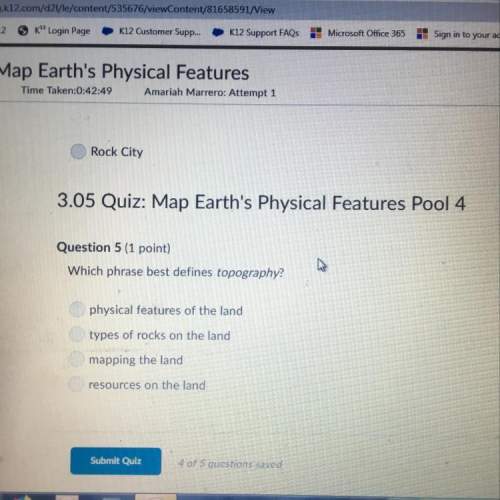
Chemistry, 04.08.2020 14:01 student0724
Calculate the concentration of ammonium ion that is required to prevent the precipitation of Cu(OH)2 in a solution with [Cu2+]=0.10 M and [NH3]=5.0×10−6 M. Cu(OH)2(s)NH3(aq)+H2O(l)↽−−⇀Cu2+(aq )+2OH−(aq)Ksp=2.0×10−19↽−−⇀NH+4(aq) +OH−(aq)Kb=1.8×10−5

Answers: 1


Another question on Chemistry

Chemistry, 22.06.2019 00:00
Select the correct answer. which statement is true about a polarized object? o a. it gains electrons and becomes negatively charged. ob. it gains protons and becomes positively charged. oc. the number of positive and negative charges can be the same. od. it has to be a metal. o e. there is no change in the distribution of the charge in the object. reset next what
Answers: 3


Chemistry, 22.06.2019 01:10
Which of the following elements would you expect to have the lowest ionization energy value? fluorine, lithium, neon, nitrogen
Answers: 2

Chemistry, 22.06.2019 09:10
Select the correct answer from each drop-down menu.describe what happens to a carbon-11 atom when it undergoes positron emission.the decay of a carbon-11 atom _1_, and this causes it to emit _2_.options for 1: > changes a neutron into a proton> changes a proton into a neutron> is hit with a neutron> reconfigures its protons and neutronsoptions for 2: > a negatively charged electron-sized particle> a positively charged election-sized particle> two atoms and several neutrons> two neutrons and two protons
Answers: 3
You know the right answer?
Calculate the concentration of ammonium ion that is required to prevent the precipitation of Cu(OH)2...
Questions


Health, 21.06.2019 16:10








Physics, 21.06.2019 16:10


Physics, 21.06.2019 16:10



Computers and Technology, 21.06.2019 16:10

Computers and Technology, 21.06.2019 16:10



History, 21.06.2019 16:10





